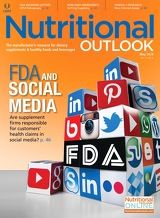Should Gummy Manufacturers Use Gelatin or Pectin?
Of all the gel-forming ingredients available, gelatin and pectin are some of the most prevalent. And a case can be made for each.
Not a moment too soon, gummies are enjoying life beyond the confectionery aisle. SPINS market data indicate that for the year ending March 23, 2014, vitamin and mineral gummies alone saw a 24% jump in sales. From fiber to fish oil, manufacturers are increasingly marketing health products as these confectionery treats, but the decision to make health products as gummies can bring manufacturers to a crossroads: should they use gelatin or pectin? Despite the many methods for formulating gummies today, these two gelling agents remain the most popular, and a case can be made for using either.
Gelatin
Gelatin is a processed protein from collagen, extracted from the hides and bones of pigs, cattle, and, to a lesser extent, fish. The ingredient is a byproduct of the meat industry, and it would not be widely available if not for this larger industry supporting it.
Gelatin has the essential gelling characteristic that is necessary for making gummies, but gelatin is often regarded not just for this sole function, but for a collection of functional benefits that can support everything from the ability to swallow dietary supplement capsules to the plush springiness of marshmallows. Gelatin is an aerating agent. It’s also an emulsifier, a stabilizer, a protective colloid, film-forming, water-binding, and an adhesive. Gelatin is versatile. Its most signature effect in gummies, though, is its melt-in-mouth quality.
Gelatin has what is technically referred to as “thermal reversibility.” This means that gelatin can transition from a solid state as candy to a melting condition at body temperature and ingestion. “For orally ingested foods and supplements, this allows for a more intense, rapid release of flavor,” says Lara Niemann, marketing director for gelatin supplier Gelita USA (Sergeant Bluff, IA). “With other hydrocolloids, you don’t get the same flavor sensation, because that hydrocolloid is not melting, so to speak, when it’s in your mouth.”
Another potential advantage of gelatin formulations is the ingredient’s inherent sheen, capable of producing gummies with brilliant, almost transparent color. With or without gelatin, manufacturers often coat gummies in powdered sugar, so there are other ways of achieving visual brilliance; still, researchers say gelatin’s combination of sheen and melt-in-mouth texture has yet to be duplicated by any polysaccharide.
For all of gelatin’s versatility, gelatin’s animal source can create obstacles. Pig gelatin is, by and large, the most popular source of today’s commercial gelatin, but the porcine source represents a problem for both halal and kosher diets, as these cultural doctrines forbid the consumption of any part of the pig.
In response, two gelatin suppliers, Gelita and Geliko LLC (New York City), have partnered to secure what is likely the only cattle-derived, certified kosher gelatin on today’s market. And it wasn’t easy to achieve it.
“The certification process is very cumbersome and complex, because it all starts with the sourcing of raw material (the hide), which has to be obtained not only from kosher slaughter, but kosher-certified animals,” says Geliko president Zach Rubin. “This means you need, from slaughter, to be able to identify and trace every single hide that goes into your production. Furthermore, all of the hides must be kosher salted, and processed and transported in a certain way.”
Thanks to gelatin’s long history of use- and because of the conundrum surrounding what exactly organic livestock is-gelatin is on USDA’s National List of Allowed and Prohibited Substances, meaning it can be used up to 5% in certified organic food and
beverage products.
Pectin
The plant-based nature of pectin is likely a relief for some manufacturers, who would otherwise be without a very large vegetarian and vegan consumer base. While this gelling agent can be found in numerous plants, a great majority of production comes from just a few of them.
Citrus peel is the most widely used source of pectin, followed by the likes of apple and sugar beet, which bears pectin used for different purposes altogether. Citrus peel and apple are used in classic gelling applications such as jams, jellies, and gummies. Suppliers say these pectins create only slightly different textures, and apple peel is browner in color.
Beyond the plant-based distinction of pectin, this ingredient differs from gelatin in that the resulting eating experience is, despite being gel-like, markedly different.
“With pectin, one gets a much cleaner, shorter bite, with no chewiness and no elasticity,” says Neil Gordon, technical support manager for food applications at CP Kelco (Atlanta). “So when you’re comparing the two as gelling agents for [gummies], the final texture is completely different. Of course, both are very good, very effective, and very functional.”
Gordon says pectin also comes with a very different melting point-one that is higher than gelatin’s. This explains pectin’s shorter bite and lack of melt-in-mouth character, but it also explains a potential advantage to transport. In hot countries or supermarkets that are not air-conditioned, pectin-based gummies may hold up better than gelatin-based gummies, which may risk sticking together (i.e., melting and resolidifying). Formulations of both pectin and gelatin could provide a rather unique solution here.
At the end of the day, pectin can list as a basic source of dietary fiber, although consumers would need to consume quite a lot of gummies in order to see a real dietary fiber increase.














